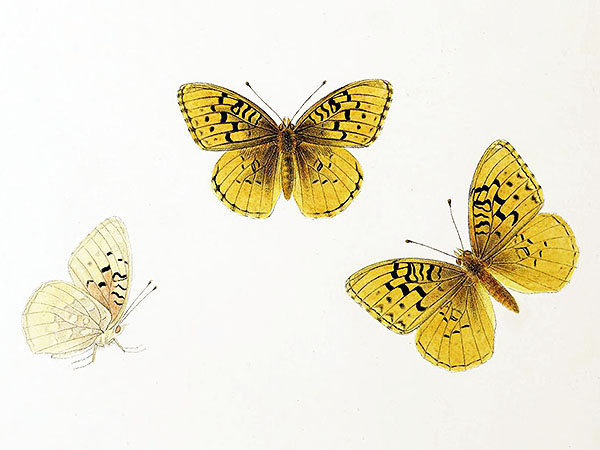Atossa Fritillary (Speyeria adiaste ssp. atossa)
The Atossa Fritillary, also known as the Unsilvered Fritillary, was described in 1890, originally as a full species, it was restricted to an area approximately at the borders between the three counties of Kern, Los Angeles and Ventura in southern California, USA.
The adult butterflies were found in open canyons wherever water was present, they were attracted by many wildflowers, but seemed to have had a special preference for the flowers of the California Buckeye (Aesculus californica (Spach) Nutt.). The larval food plant was a violet species, yet the exact species was apparently never properly recorded but is suspected to might have been the Oakwoods Violet (Viola purpurea ssp. quercetorum (M. S. Baker & J. C. Clausen) R. J. Little).
The Atossa Fritillary was last recorded in 1959 when two specimens were collected, respectively in 1960 when a last individual was spotted on the peak of Mt. Pinos in the Los Padres National Forest on the boundary between Kern – and Ventura counties.
There have been many field searches since the last sightings, yet all of them were unsuccessful, the Atossa Fritillary is extinct. [1]
*********************
References:
[1] Larry J. Orsak: Project Atossa – Preliminary report. Atala 2(2): 5-8. 1974
*********************

Depiction from: ‘Willian H. Edwards: The Butterflies of North America. Boston: Houghton, Mifflin 1884-88’
(not in copyright)
*********************
edited: 13.09.2019

